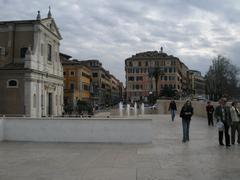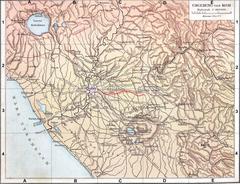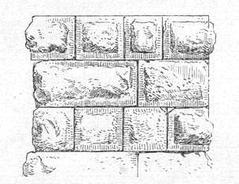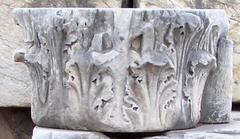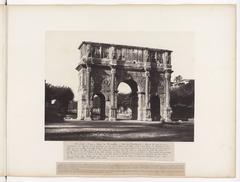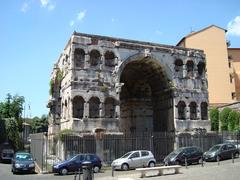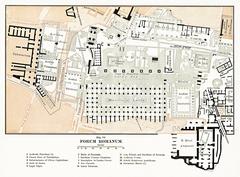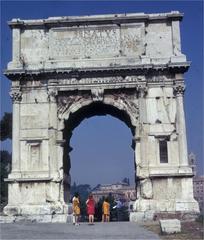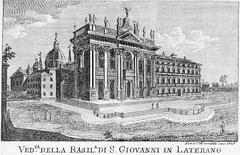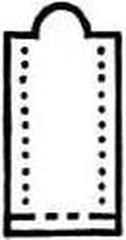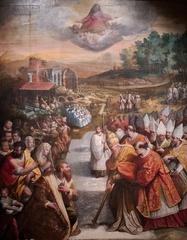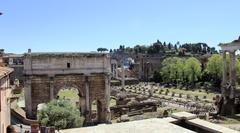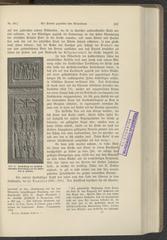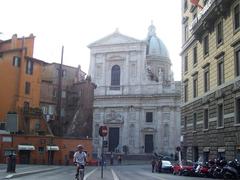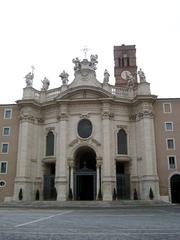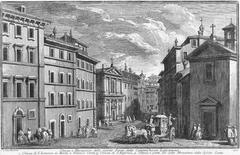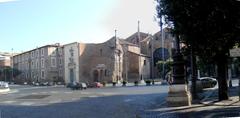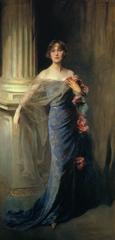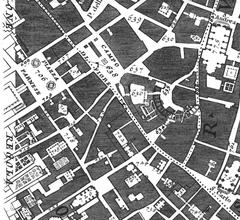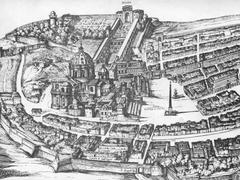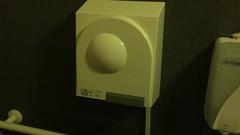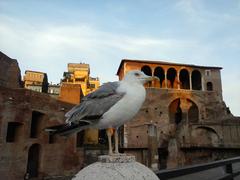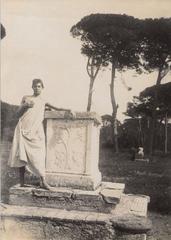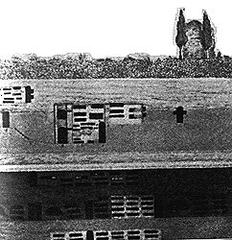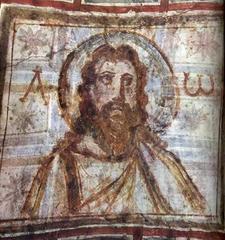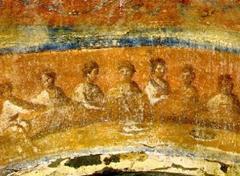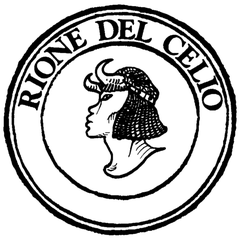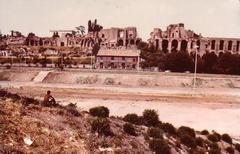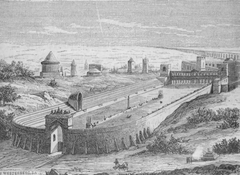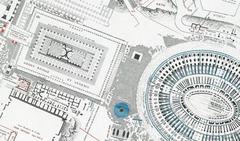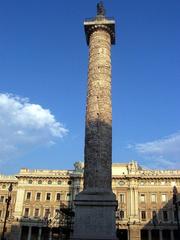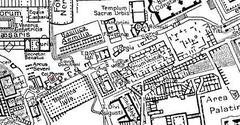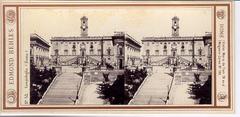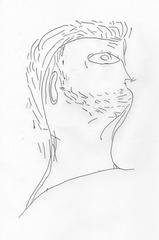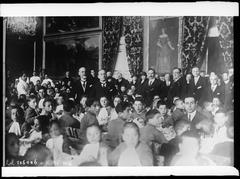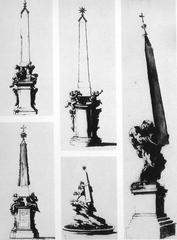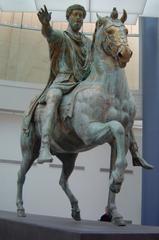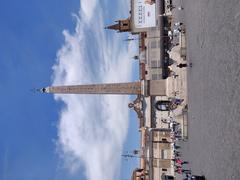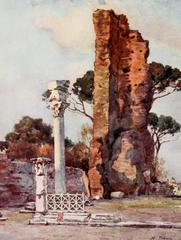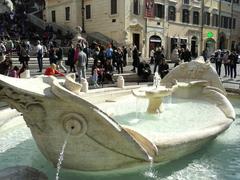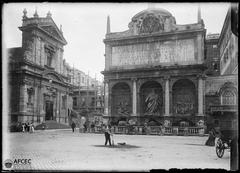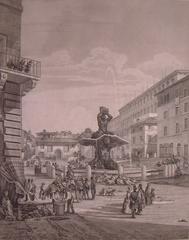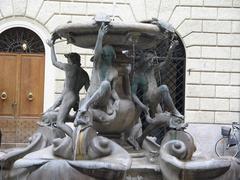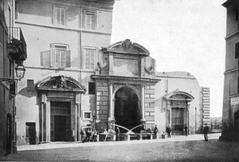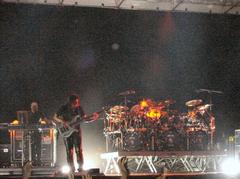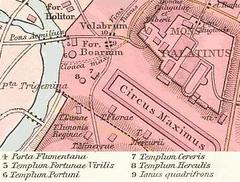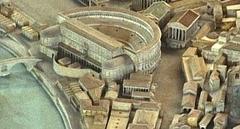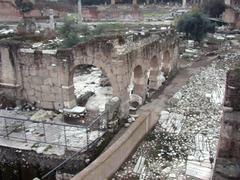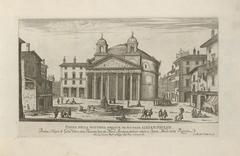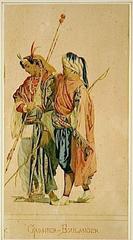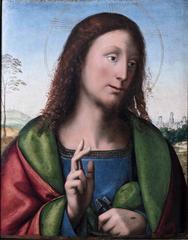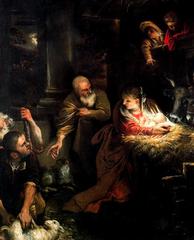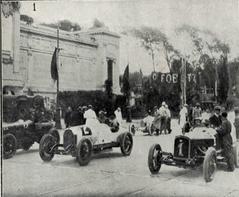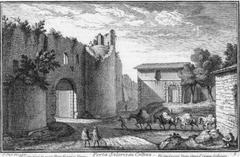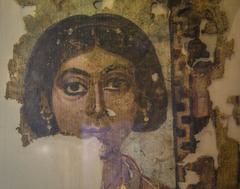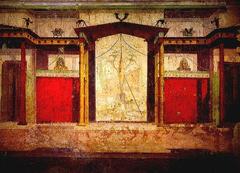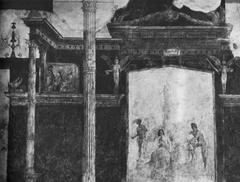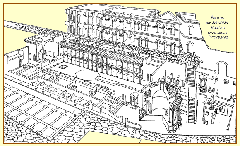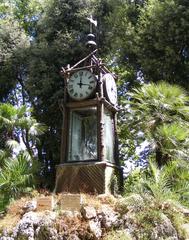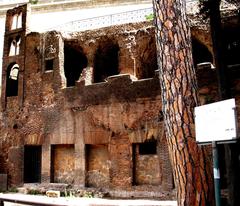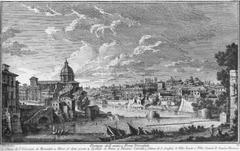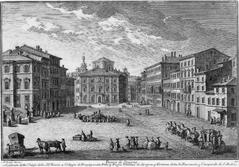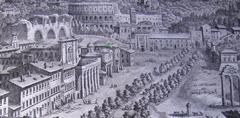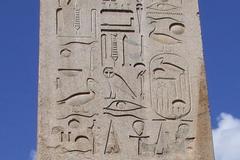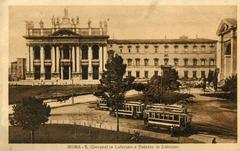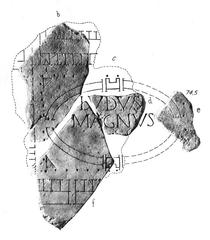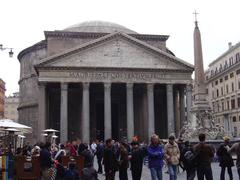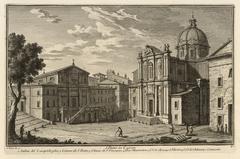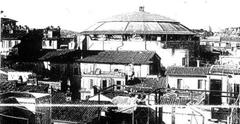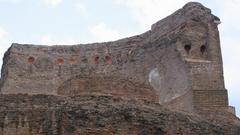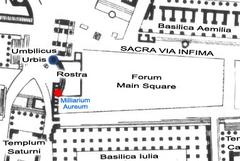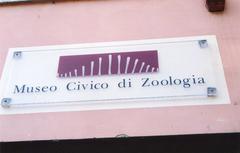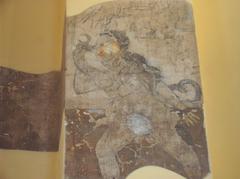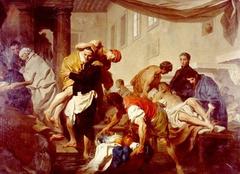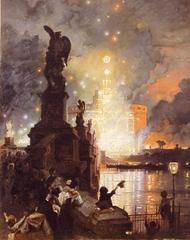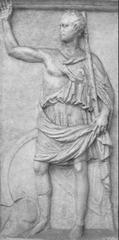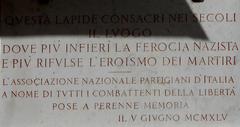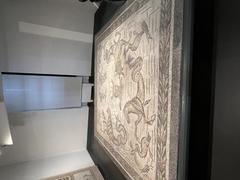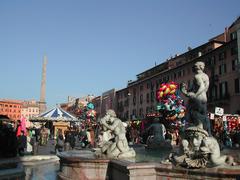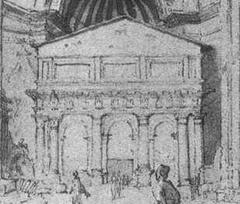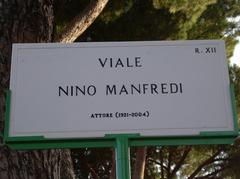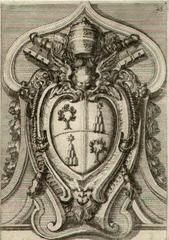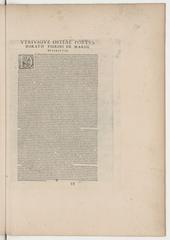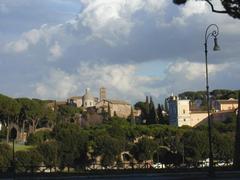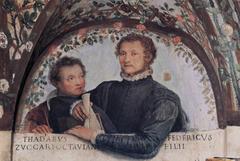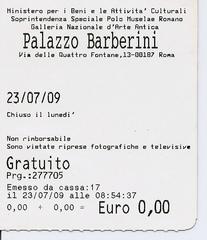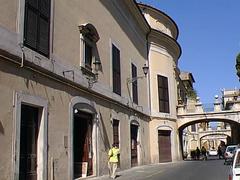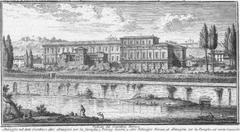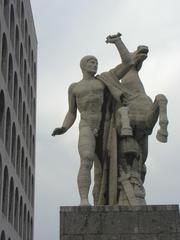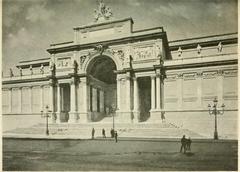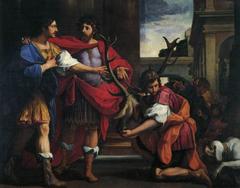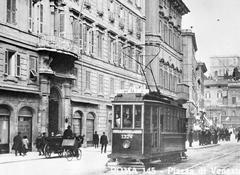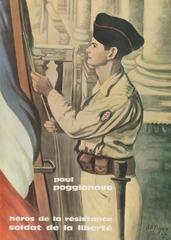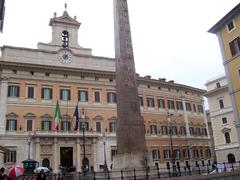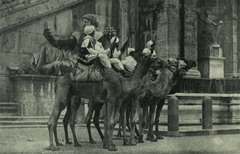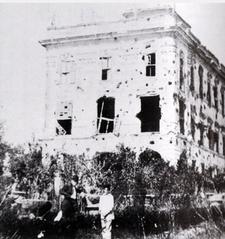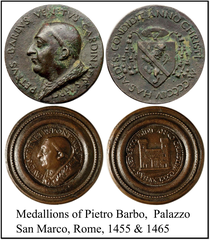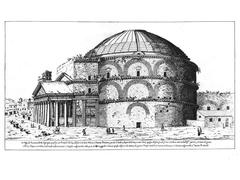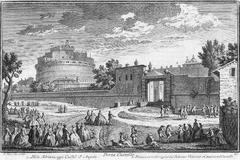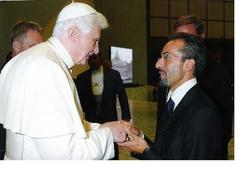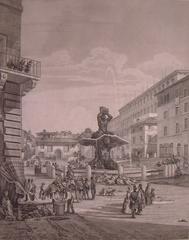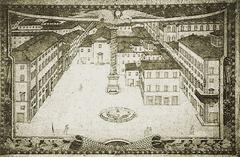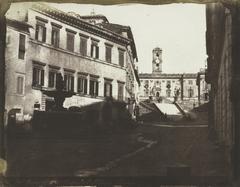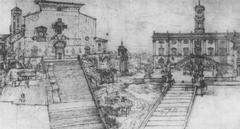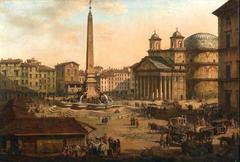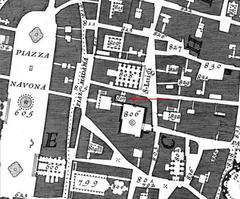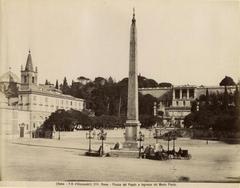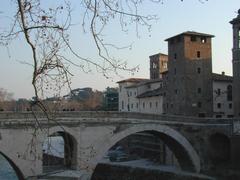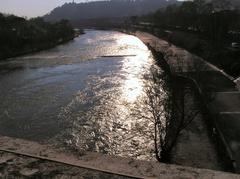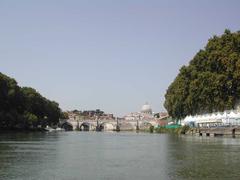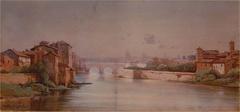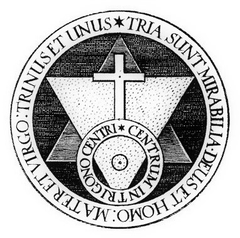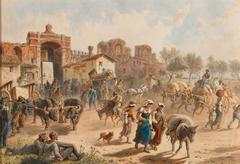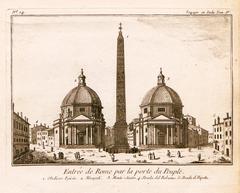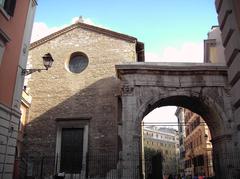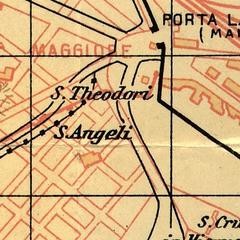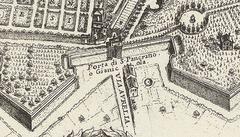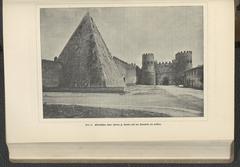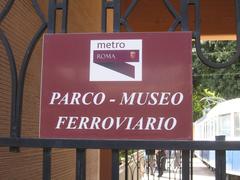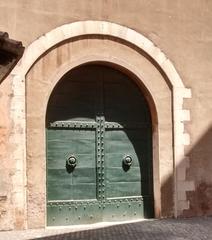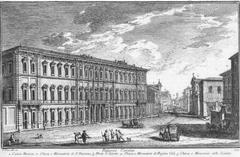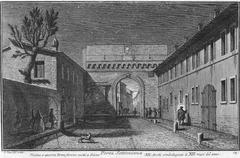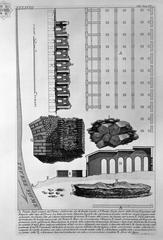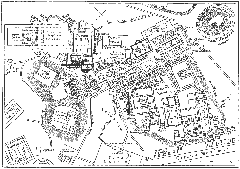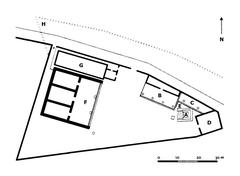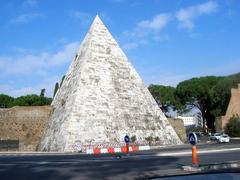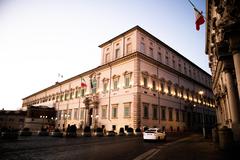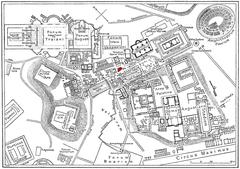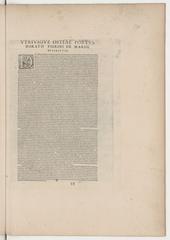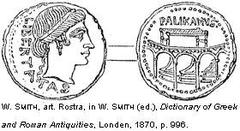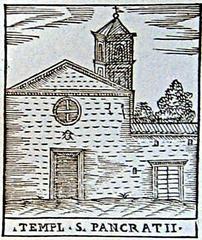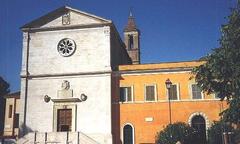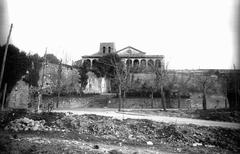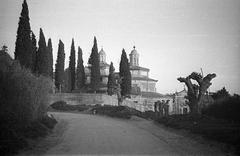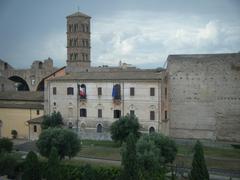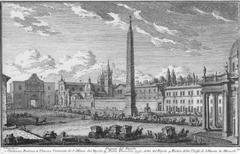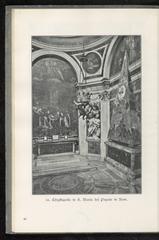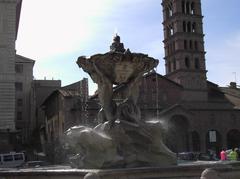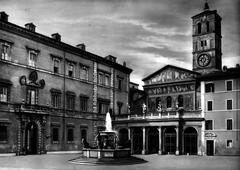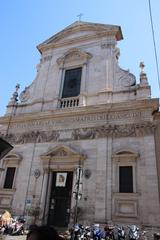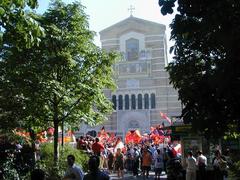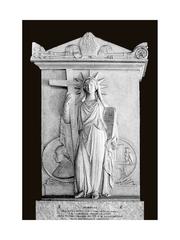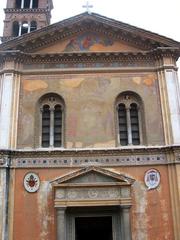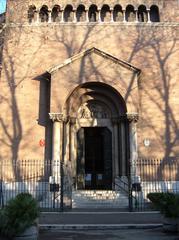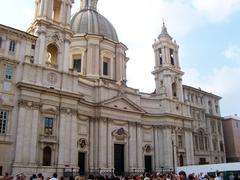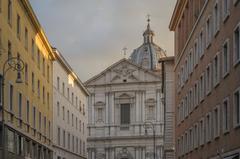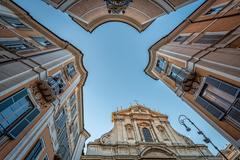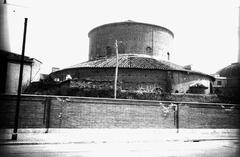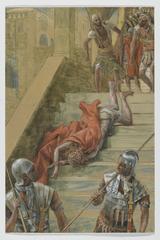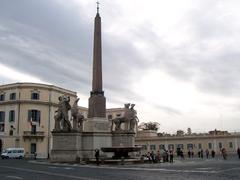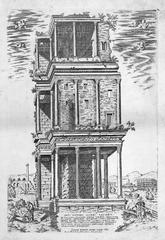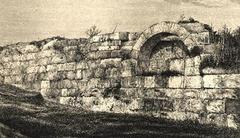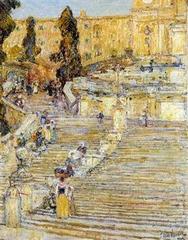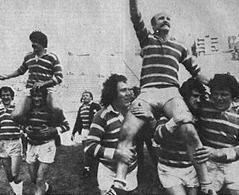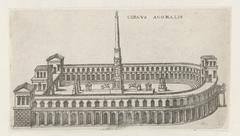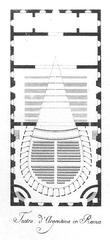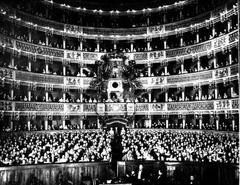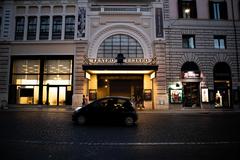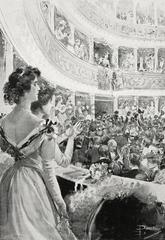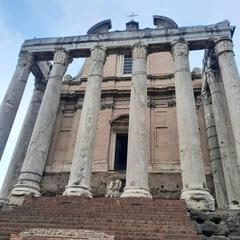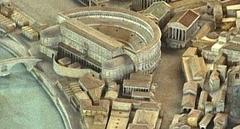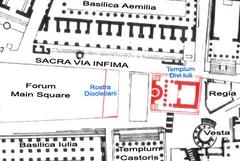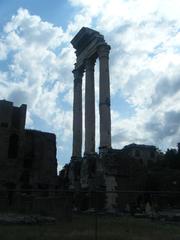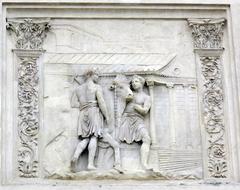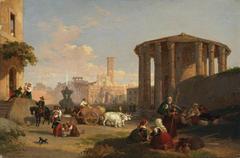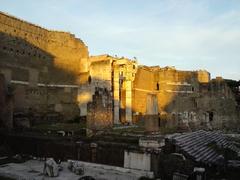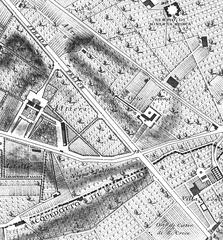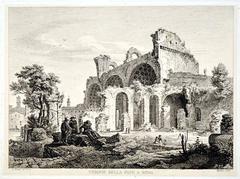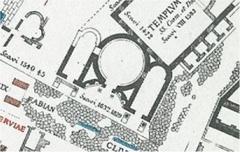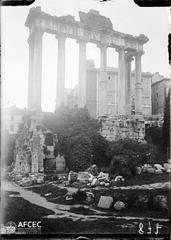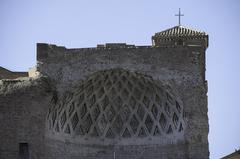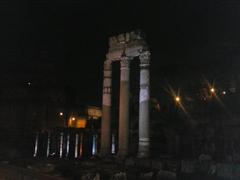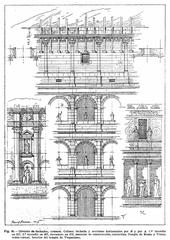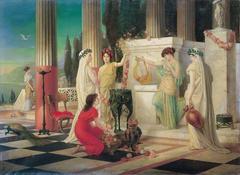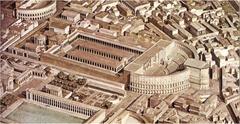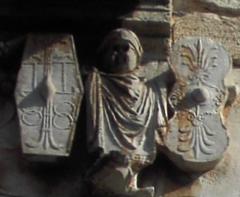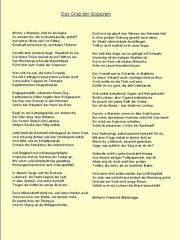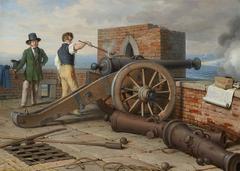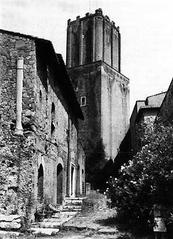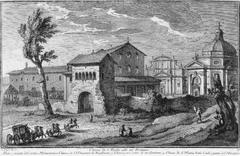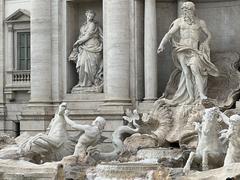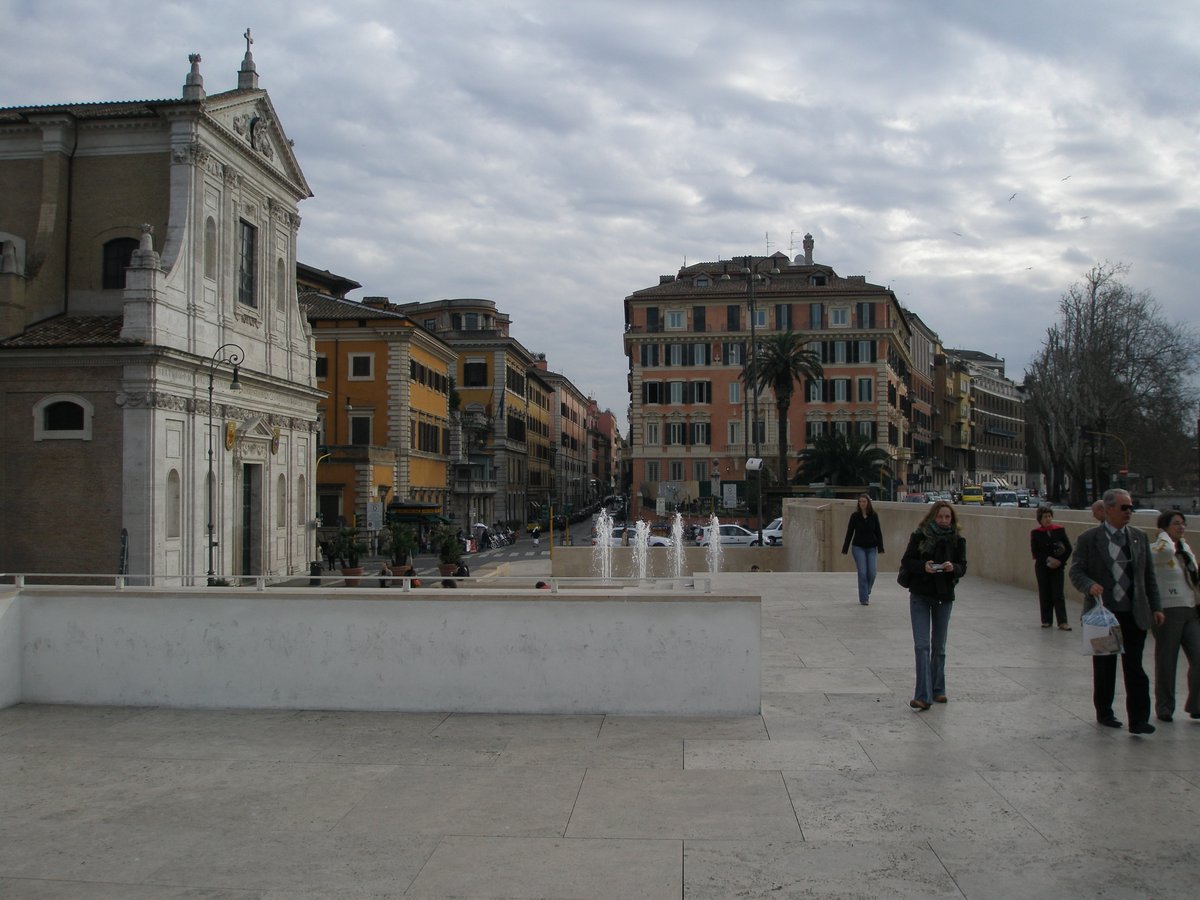
Visiting the Museo dell’Ara Pacis in Rome: Hours, Tickets, and Tips
Date: 18/07/2024
Introduction
Nestled in the heart of Rome, the Museo dell’Ara Pacis stands as a testament to the grandeur and historical depth of the Roman Empire. This museum, primarily known for housing the Ara Pacis Augustae, or Altar of Augustan Peace, offers a captivating journey through time, art, and history. Commissioned by the Roman Senate in 13 BCE to celebrate the return of Emperor Augustus from his campaigns in Spain and Gaul, the Ara Pacis symbolizes a period of peace and prosperity known as the Pax Romana. This era marked a significant period of stability and expansion for the Roman Empire, making the altar a powerful emblem of Augustus’s achievements and the flourishing of Rome under his rule.
The Ara Pacis, originally located in the northern part of Rome (Campus Martius), faced the ravages of time and natural elements, leading to its gradual burial under layers of sediment caused by frequent flooding of the Tiber River. The rediscovery and reconstruction of the monument began in the 16th century, with scattered fragments making their way into museums and private collections across Europe. A systematic excavation and reconstruction project in the late 19th and early 20th centuries, directed by archaeologist Germanico Boni, brought the Ara Pacis back to life using existing fragments and plaster casts of missing pieces.
Today, the Museo dell’Ara Pacis, designed by renowned architect Richard Meier and completed in 2006, offers a modern home for this ancient treasure. The museum’s design, utilizing glass and travertine stone, allows natural light to illuminate the intricate carvings of the Ara Pacis, creating a harmonious blend of ancient and contemporary aesthetics. This museum not only protects and preserves the monument but also provides an immersive experience for visitors to explore the rich cultural heritage of the Roman Empire. (Museo dell’Ara Pacis)
Table of Contents
- Exploring the Ara Pacis Museum - History, Significance, and Visitor Information
- Museo dell’Ara Pacis - Visiting Hours, Tickets, and Exhibitions in Rome
- Plan Your Visit to Ara Pacis - Tickets, Hours, and Travel Tips
Exploring the Ara Pacis Museum - History, Significance, and Visitor Information
Introduction
Nestled in the heart of Rome, the Ara Pacis Museum is a treasure trove of history and art that offers visitors a captivating journey through time. Whether you’re a history buff or an art enthusiast, the museum provides a unique glimpse into the Roman Empire’s rich cultural heritage.
The Ara Pacis - A Monument of Peace and Prosperity
The Ara Pacis Augustae, or Altar of Augustan Peace, is not just a stunning example of Roman art and architecture, but a monument deeply intertwined with Roman history and ideology. Commissioned by the Roman Senate in 13 BCE to honor the return of Emperor Augustus from his campaigns in Spain and Gaul, the Ara Pacis celebrates a period of peace and prosperity ushered in by Augustus’s reign. This era, known as the Pax Romana, marked a time of relative stability and expansion for the Roman Empire. The altar, therefore, served as a powerful symbol of Augustus’s achievements and the flourishing of Rome under his rule.
From Fragments to Reconstruction - A Journey Through Time
The Ara Pacis, originally located in the northern part of Rome (Campus Martius), suffered the same fate as many ancient structures, falling victim to the ravages of time and the elements. Over the centuries, it was gradually buried under layers of sediment caused by frequent flooding of the Tiber River. The rediscovery of the Ara Pacis began in the 16th century with the unearthing of various fragments. These scattered pieces, prized for their exquisite artistry, found their way into museums and private collections across Europe. It wasn’t until the late 19th and early 20th centuries that a concerted effort was made to reconstruct the monument. Under the direction of archaeologist Germanico Boni, a systematic excavation and reconstruction project was undertaken. Using both existing fragments and plaster casts of missing pieces, the Ara Pacis began to take shape once more.
A Modern Home for an Ancient Treasure - The Museo dell’Ara Pacis
The decision to house the reconstructed Ara Pacis in a dedicated museum reflects the monument’s significance and the desire to protect it for future generations. The first museum, built in 1938 during Mussolini’s regime, was a controversial structure, criticized for its stark, fascist architectural style that clashed with the ancient monument it housed. In the late 1990s, renowned architect Richard Meier was commissioned to design a new museum. Completed in 2006, the current Museo dell’Ara Pacis is a striking example of modern architecture that seamlessly blends with its historical surroundings. The museum’s design, with its use of glass and travertine stone, allows natural light to flood the space, illuminating the intricate carvings of the Ara Pacis and creating a dialogue between ancient and modern.
Visitor Information
- Ara Pacis Museum Visiting Hours: The museum is open daily from 9:30 AM to 7:30 PM. Note that the last admission is 30 minutes before closing time.
- Ara Pacis Museum Tickets: General admission is €10, with discounts available for seniors, students, and children. Tickets can be purchased online or at the museum entrance.
- Accessibility: The museum is wheelchair accessible, with ramps and elevators available for ease of movement.
- Travel Tips: The museum is located at Lungotevere in Augusta, 00186 Rome, Italy. It’s easily accessible by public transport, with several bus stops nearby.
- Nearby Attractions: While visiting the Ara Pacis Museum, consider exploring other nearby historical sites such as the Mausoleum of Augustus, the Spanish Steps, and the Trevi Fountain.
- Special Events and Guided Tours: The museum often hosts special exhibitions and guided tours. Check the official website for the latest updates and schedules.
The Significance of the Ara Pacis Today
Today, the Ara Pacis continues to captivate visitors with its beauty and historical significance. It stands as a testament to the artistic and architectural achievements of the Roman Empire, offering a glimpse into the lives and beliefs of the people who lived during Augustus’s reign. Beyond its aesthetic appeal, the Ara Pacis serves as a reminder of the importance of peace and prosperity. In a world often marked by conflict and uncertainty, the monument’s message of harmony and stability resonates deeply, making it a powerful symbol for contemporary society.
Conclusion
Visiting the Museo dell’Ara Pacis is not just about admiring an ancient artifact; it’s about connecting with a pivotal moment in history and reflecting on the enduring values it represents. Whether you’re exploring Rome’s historical sites or seeking inspiration from the past, the Ara Pacis Museum offers a profound experience that bridges the gap between ancient and modern.
FAQ
- What is the Ara Pacis? The Ara Pacis Augustae is an ancient Roman altar dedicated to Pax, the Roman goddess of peace, commissioned by Emperor Augustus.
- Where is the Ara Pacis Museum located? The museum is located at Lungotevere in Augusta, 00186 Rome, Italy.
- What are the museum’s opening hours? The museum is open daily from 9:30 AM to 7:30 PM, with the last admission at 7:00 PM.
- How much are the tickets? General admission is €10, with discounts available for seniors, students, and children.
- Is the museum wheelchair accessible? Yes, the museum is wheelchair accessible, with ramps and elevators available.
Museo dell’Ara Pacis - Visiting Hours, Tickets, and Exhibitions in Rome
Introduction
The Museo dell’Ara Pacis is a gem among Rome’s historical sites, offering visitors an immersive experience into the world of ancient Rome. Known primarily for housing the Ara Pacis Augustae, the museum also features a range of exhibitions and collections that provide valuable context to the altar’s creation and the reign of Augustus. This guide covers everything you need to know, from visiting hours and ticket prices to the fascinating exhibitions you can explore.
Visiting Hours and Tickets
Before diving into the museum’s rich offerings, it’s essential to know the practical details:
- Visiting Hours: The Museo dell’Ara Pacis is open from 9:30 AM to 7:30 PM daily. Note that the last admission is one hour before closing time. The museum is closed on January 1st and December 25th.
- Ticket Prices: General admission tickets cost €10, while reduced tickets for EU citizens aged 18-25 and senior citizens over 65 are available for €8. Admission is free for children under 18, as well as for disabled visitors and their companions. For the latest ticket prices and special discounts, check the official website.
Exhibitions and Collections
While the Ara Pacis Augustae itself is undoubtedly the star attraction, the Museo dell’Ara Pacis offers a much richer experience than simply viewing the altar. The museum houses a fascinating collection of artifacts and exhibitions that provide context to the altar’s creation, the reign of Augustus, and life in Roman times.
The Ara Pacis in Context
The museum’s layout is designed to guide visitors chronologically through the reign of Augustus and the significance of the Ara Pacis within that period.
- Ground Floor: This level focuses on the history and construction of the Ara Pacis. Visitors can explore the intricate carvings up close, appreciating the artistry and symbolism embedded within them. Informative displays explain the historical context of the altar’s commission, its original location near the Via Flaminia, and its role in promoting Augustus’s message of peace and prosperity.
- Lower Level: Descending to the lower level, visitors are immersed in the world of Augustan Rome. This section houses a collection of artifacts recovered from the area where the Ara Pacis once stood, including sculptures, architectural fragments, and everyday objects. These provide a tangible link to the daily lives of the people who lived in Rome during Augustus’s reign.
Highlights of the Collection
The museum’s collection, though not vast, offers captivating glimpses into Roman art, architecture, and daily life. Some of the notable pieces include:
- Fragments of the Solarium Augusti: This large sundial, built by Augustus, was once a prominent landmark in Rome. The museum displays fragments of the monument, including sections of the marble calendar that once adorned it.
- Statues and Busts: The museum houses a collection of Roman portraiture, including busts of Augustus and other prominent figures from his reign. These sculptures showcase the Roman skill in capturing likeness and conveying power and authority through art.
- The Tellus Relief: This intricately carved panel, originally part of the Ara Pacis enclosure, depicts Tellus, the Roman goddess of Earth, surrounded by symbols of fertility and abundance. It is a masterpiece of Roman relief sculpture and offers insights into Roman religious beliefs and iconography.
- Inscriptions and Decrees: The museum displays several inscriptions from the Augustan period, including fragments of the Res Gestae Divi Augusti, Augustus’s own account of his accomplishments. These inscriptions provide valuable historical documentation and offer a glimpse into the political landscape of the time.
Temporary Exhibitions
In addition to its permanent collection, the Museo dell’Ara Pacis hosts temporary exhibitions that explore various aspects of Roman history, art, and culture. These exhibitions often feature artifacts on loan from other museums and institutions, providing visitors with a unique opportunity to engage with a wider range of objects and themes.
Enhancing Your Visit
To make the most of your visit to the Museo dell’Ara Pacis, consider these tips:
- Guided Tours: Guided tours, available in multiple languages, offer valuable insights into the history and significance of the Ara Pacis and the museum’s collection.
- Audio Guides: Audio guides provide a flexible and informative way to explore the museum at your own pace.
- Special Events: The museum hosts various special events throughout the year, including lectures, workshops, and concerts. Check the museum’s website for upcoming events.
- Combine Your Visit: The Museo dell’Ara Pacis is located within walking distance of other major attractions in Rome, such as the Mausoleum of Augustus and the Spanish Steps. Consider combining your visit with these sites for a comprehensive exploration of Roman history and culture.
Nearby Attractions and Travel Tips
- Mausoleum of Augustus: Just a short walk from the museum, this ancient mausoleum is another key historical site from the Augustan era.
- Spanish Steps: A renowned landmark in Rome, perfect for a leisurely stroll after your museum visit.
- Travel Tips: Public transport options include buses and the metro. Check local schedules to plan your visit best.
FAQ
- What are the Museo dell’Ara Pacis visiting hours? The museum is open from 9:30 AM to 7:30 PM daily, with the last admission one hour before closing.
- How much do tickets cost? General admission is €10, with reduced prices for certain groups. Admission is free for children under 18 and disabled visitors.
- Are there any guided tours available? Yes, guided tours are available in multiple languages. Check the museum’s website for more details.
- Can I visit other attractions nearby? Absolutely, the Museo dell’Ara Pacis is near the Mausoleum of Augustus and the Spanish Steps.
Conclusion
The Museo dell’Ara Pacis offers a captivating journey through Roman history, art, and architecture. By exploring its exhibitions and collections, visitors can gain a deeper understanding of the Ara Pacis itself and its place within the broader context of Augustan Rome. Don’t forget to check out the special events and temporary exhibitions to make the most of your visit. For more updates and travel tips, follow our blog or download our mobile app Audiala.
Plan Your Visit to Ara Pacis - Tickets, Hours, and Travel Tips
Introduction
The Museo dell’Ara Pacis in Rome is a must-see destination for history enthusiasts and art lovers alike. This guide provides all the essential information you need for a seamless and enriching visit, including details on tickets, visiting hours, accessibility, and tips to make the most of your experience.
Planning Your Visit
Location and Accessibility
- Address: Museo dell’Ara Pacis, Lungotevere in Augusta, Rome, Italy (Google Maps)
- Public Transportation:
- Metro: Line A (Red Line), Spagna or Flaminio stations
- Bus: Lines 23, 80, 90, 160, 280, 490, 495, 628
- Accessibility: The museum is fully accessible to visitors with disabilities, featuring ramps, elevators, and accessible restrooms. Wheelchairs are available free of charge with prior reservation.
Opening Hours
- Tuesday to Sunday: 9:30 AM to 7:30 PM
- Last admission: 6:30 PM
- Closed: Mondays, December 25, January 1, May 1
- Extended Hours: On the first Sunday of each month, admission is free, and the museum is open from 9:30 AM to 7:30 PM.
Tickets
- Full price: €12
- Reduced price: €8 (EU citizens aged 18-25, teachers)
- Free admission: Visitors under 18, disabled visitors and their companions, licensed tour guides, journalists
- Roma Pass: The Ara Pacis Museum is included in the Roma Pass, offering free entry to two museums and discounted entry to others, as well as unlimited use of public transportation. (Official Website)
- Online Booking: It is highly recommended to purchase tickets online in advance, especially during peak season, to avoid long queues. (Ticket Purchase)
Making the Most of Your Visit
Guided Tours
- Audio Guides: Available in multiple languages, including English, Italian, French, Spanish, and German. The audio guide provides a comprehensive overview of the history and significance of the Ara Pacis and its intricate carvings.
- Guided Tours: Guided tours in English and Italian are available at scheduled times throughout the day. These tours offer a deeper understanding of the monument and its context within Roman history and art. Check the museum website or inquire at the ticket office for tour schedules and availability.
Exploring the Museum
- The Ara Pacis: The main attraction is undoubtedly the Ara Pacis itself, housed within a stunning modern structure designed by Richard Meier. Take your time to admire the intricate reliefs depicting scenes from Roman mythology, history, and daily life. The museum provides detailed information panels in both English and Italian to guide your understanding.
- Temporary Exhibitions: The museum also hosts temporary exhibitions related to Roman history, art, and archaeology. Check the museum website for current and upcoming exhibitions.
- Museum Shop: The museum shop offers a selection of books, souvenirs, and replicas related to the Ara Pacis and Roman history.
Tips for Your Visit
- Allow ample time: Plan to spend at least 1.5 to 2 hours to fully appreciate the Ara Pacis and its surrounding exhibits.
- Visit during off-peak hours: To avoid crowds, consider visiting early in the morning or later in the afternoon.
- Photography: Photography is permitted for personal use, but flash photography and tripods are not allowed.
- Dress code: There is no specific dress code, but comfortable shoes are recommended as you will be doing a fair amount of walking.
- Combine your visit: The Ara Pacis Museum is located within walking distance of other major attractions, such as the Spanish Steps, Piazza del Popolo, and the Mausoleum of Augustus. Consider combining your visit with these nearby landmarks for a comprehensive Roman experience.
Historical and Cultural Significance
The Ara Pacis Augustae, or Altar of Augustan Peace, was commissioned by the Roman Senate in 13 BCE to honor Emperor Augustus and celebrate peace in the Roman Empire. The monument is renowned for its intricate reliefs depicting scenes of Roman mythology,daily life, and historical events. These artistic elements offer a glimpse into the cultural and political landscape of ancient Rome.
Nearby Attractions
- Spanish Steps: A famous set of steps leading up to the Trinità dei Monti church, offering a beautiful view of the city.
- Piazza del Popolo: A large urban square with historical significance and various attractions, including the twin churches of Santa Maria dei Miracoli and Santa Maria in Montesanto.
- Mausoleum of Augustus: The monumental tomb of Rome’s first emperor, Augustus, located near the Ara Pacis.
FAQ
What are the visiting hours for Ara Pacis?
The Ara Pacis is open from Tuesday to Sunday, 9:30 AM to 7:30 PM, with the last admission at 6:30 PM. It is closed on Mondays, December 25, January 1, and May 1.
How much do Ara Pacis tickets cost?
Tickets cost €12 for full price, €8 for reduced price, and free for certain categories such as visitors under 18 and disabled visitors. The museum is also included in the Roma Pass.
Is the Ara Pacis Museum accessible?
Yes, the museum is fully accessible, with ramps, elevators, and accessible restrooms. Wheelchairs are available free of charge with prior reservation.
Call to Action
Stay updated on the latest exhibitions and events at the Museo dell’Ara Pacis by following us on social media. Don’t forget to download the official mobile app Audiala for an enhanced museum experience. For more tips on exploring Rome’s historical sites, check out our other blog posts.
Conclusion
Visiting the Museo dell’Ara Pacis is more than just an opportunity to admire an ancient artifact; it is a profound experience that bridges the gap between ancient history and modern appreciation. The Ara Pacis stands as a testament to the artistic and architectural achievements of the Roman Empire, offering a glimpse into the lives and beliefs of the people who lived during Augustus’s reign. Beyond its aesthetic appeal, the monument serves as a powerful reminder of the importance of peace and prosperity, resonating deeply in today’s often tumultuous world.
The museum’s comprehensive exhibits, ranging from the intricate reliefs of the Ara Pacis itself to the artifacts and temporary exhibitions that provide context to its creation, offer visitors a deep and enriching understanding of Roman history and culture. Whether you are a history enthusiast, an art lover, or simply a curious traveler, the Museo dell’Ara Pacis provides a unique and memorable experience.
For those planning a visit, the museum’s accessible location, practical visitor information, and nearby attractions such as the Mausoleum of Augustus and the Spanish Steps make it an essential stop on any Roman itinerary. By exploring the Museo dell’Ara Pacis, visitors not only connect with a pivotal moment in history but also reflect on the enduring values of harmony and stability that the monument represents. (Museo dell’Ara Pacis)
References
- Museo dell’Ara Pacis (Museo dell’Ara Pacis)
